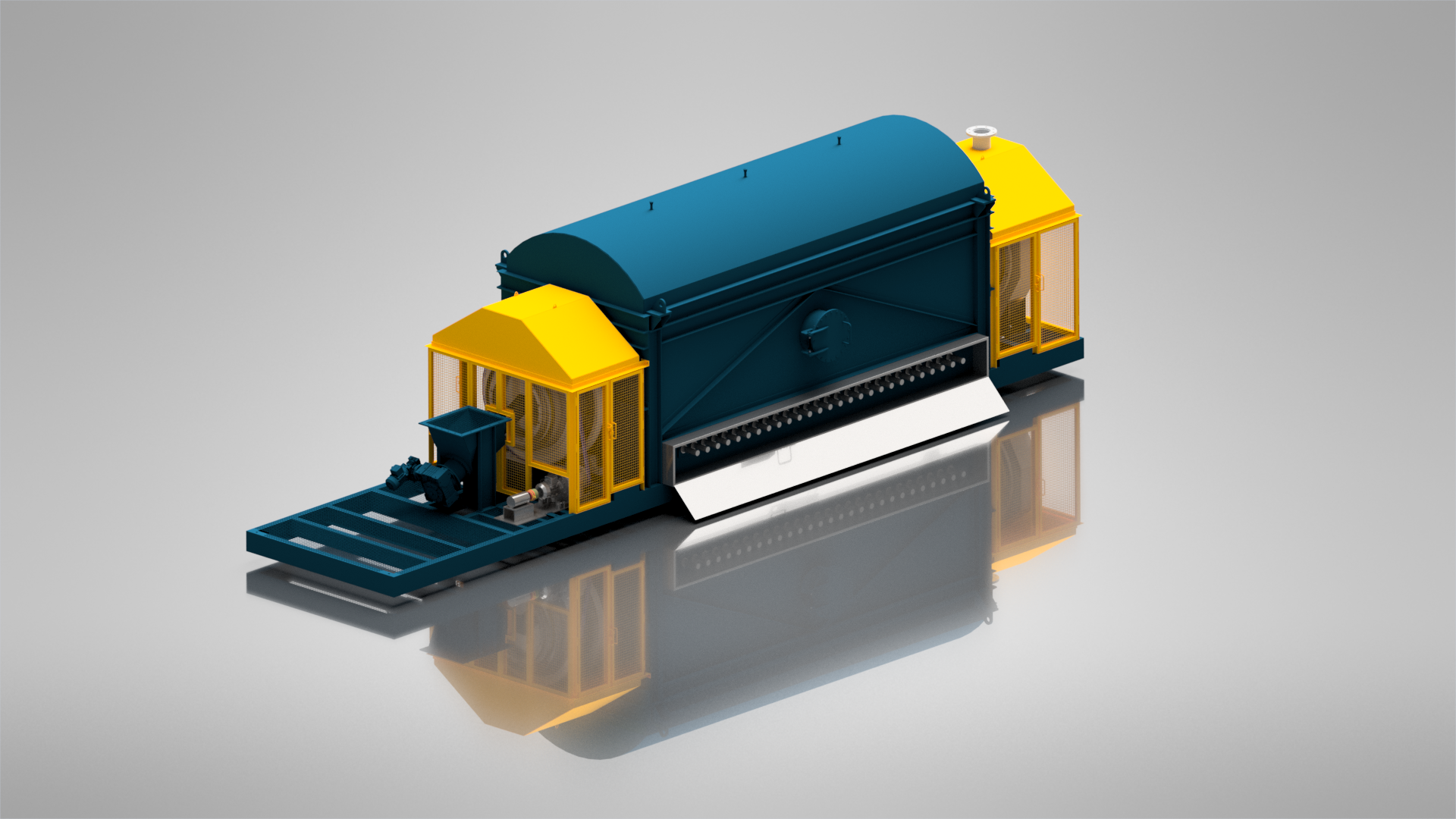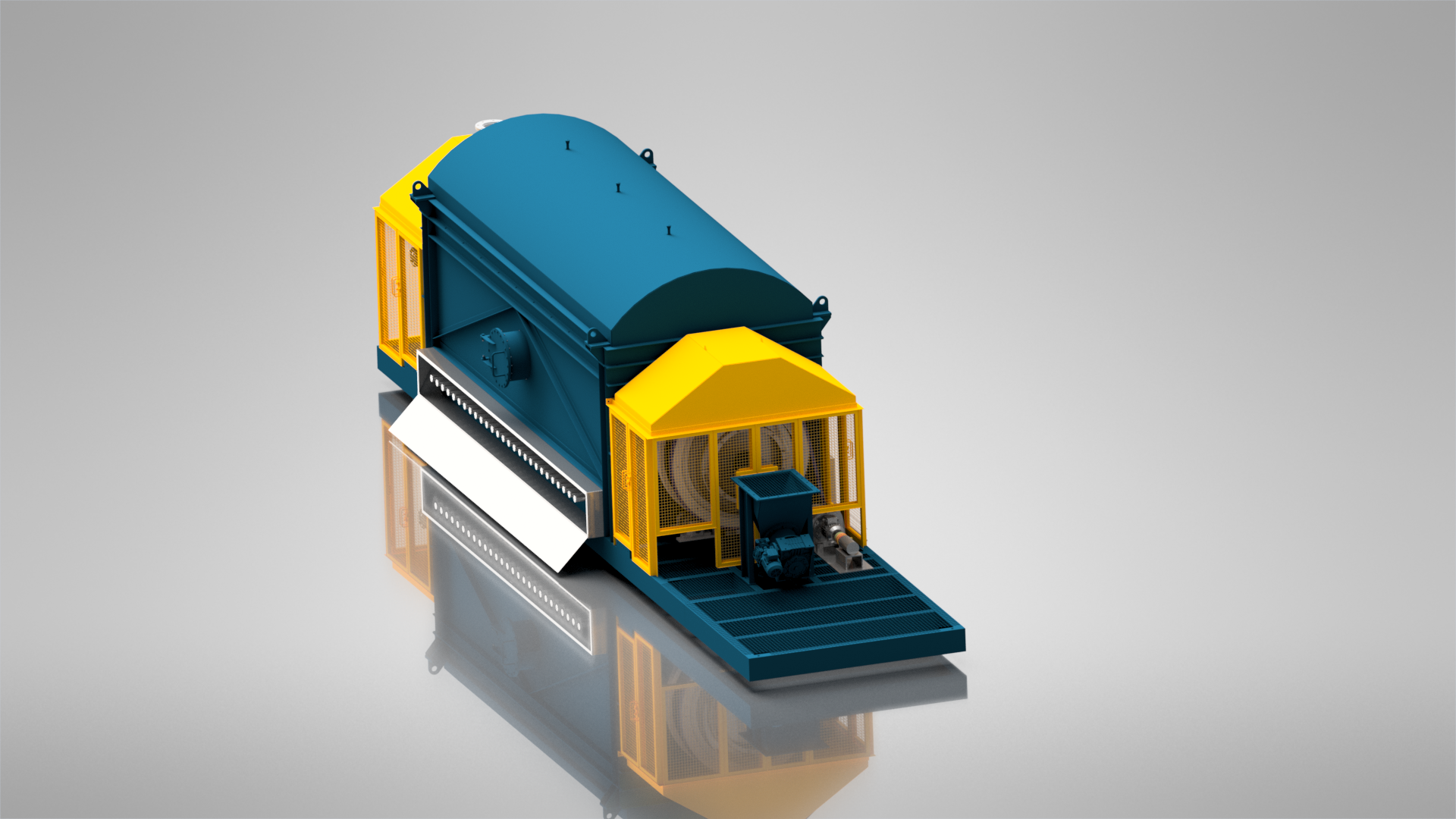Carbon Regeneration Kiln
Technical Details
Kiln Capacity
50-700 kg/hour
Regeneration Duration
10-60 minutes, adjustable
Kiln Angle
Adjustable for retention time
Heating Zone Control
3 Zones, external Control
Heating Elements
Silicon Carbide
Carbon Feeding
Screw Feeder, Included
Suction System
Fan System, Included
Drum Speed
Adjustable for retention time
Emergency System
60 minutes battery capacity for equal cooling and shut down
Automation System
Fully Automatic PLC Control System
About
There is a heat treatment applied to remove organic and inorganic substances accumulated on the surfaces of carbon grains by burning and to reactivate the carbon surface. The equipment concept of horizontal carbon regeneration furnaces is based on the process in an oxygen-depleted environment in a rotating retort tube placed inside a hot combustion chamber. The rotating tube loads the spent carbon into the furnace with the screw feeding system.
The heat treatment in the rotary kiln can be provided with silicon carbide type resistors or wire heaters surrounded by a blanket. The ambient temperature provided by the resistances heats the combustion chamber after a while. The external heat is then transferred to the carbon by passing through the outer surface of the rotating tube. It is aimed to preserve the heat and reduce the heat load with ceramic fiber insulation blanket and refractory bricks.
The oven operates in the temperature range of 700 – 750°C. Thanks to the instruments found to control the internal temperature of the oven, the temperature can be observed with the PLC system. It will be controlled by the HMI panel next to the oven. The revolving tube roll is to provide a vapor-rich, oxygen-deprived environment in which all the carbon in the tube is exposed to this atmosphere without changing its temperature for approximately 20 – 30 minutes. Steam also acts as a barrier to prevent oxygen from leaking into the heat tube.
The evacuation of the regenerated carbon from the carbon regeneration furnace is achieved by pouring it into a transfer tank. This process provides additional surface formation by exposing the carbon to thermal shock.
There is an air fan on the carbon regeneration furnace. Air fans are used to evacuate the oxygen and excess steam present in the oven.






